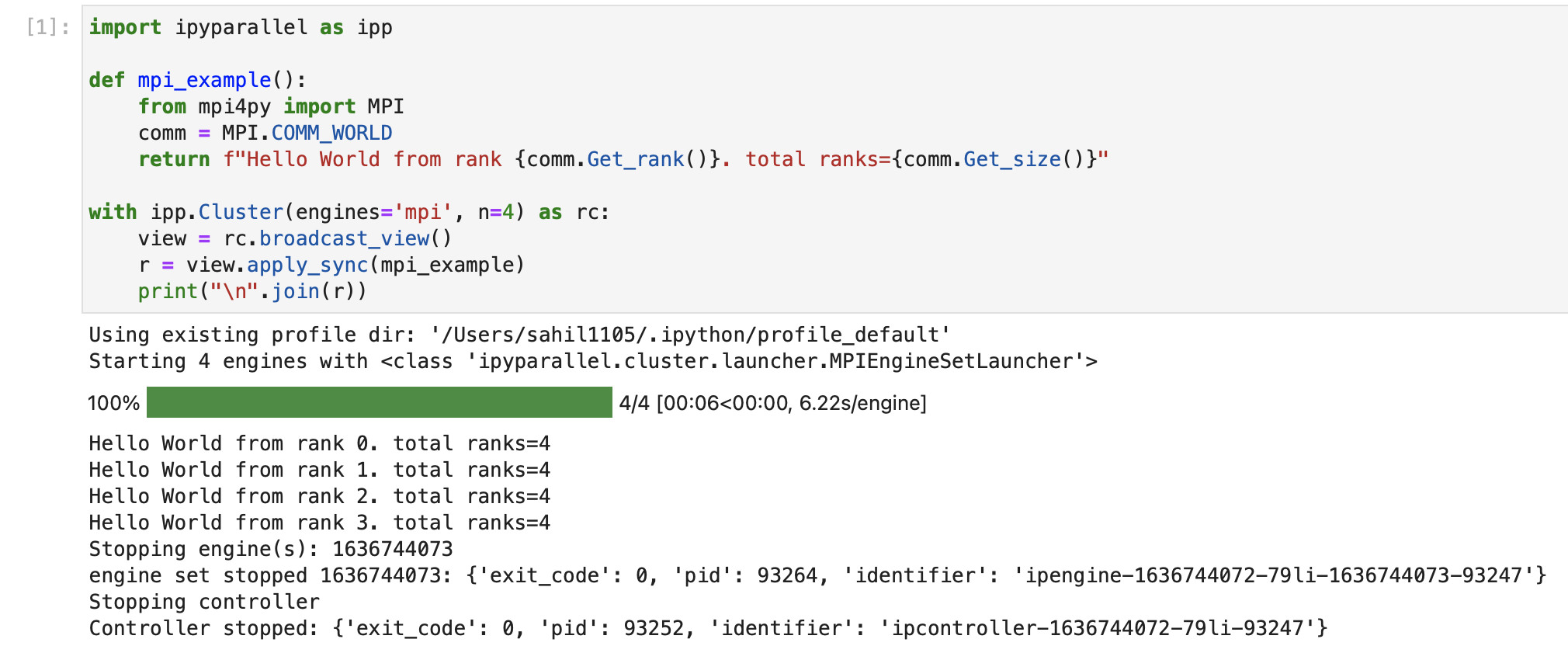Using IPython for parallel computing#
- Release:
8.8.0
- Date:
Apr 05, 2024
Installing IPython Parallel#
As of 4.0, IPython parallel is now a standalone package called ipyparallel.
You can install it with:
pip install ipyparallel
or:
conda install ipyparallel
As of IPython Parallel 7, this will include installing/enabling an extension for both the classic Jupyter Notebook and JupyterLab ≥ 3.0.
Quickstart#
IPython Parallel
A quick example to:
allocate a cluster (collection of IPython engines for use in parallel)
run a collection of tasks on the cluster
wait interactively for results
cleanup resources after the task is done
import time
import ipyparallel as ipp
task_durations = [1] * 25
# request a cluster
with ipp.Cluster() as rc:
# get a view on the cluster
view = rc.load_balanced_view()
# submit the tasks
asyncresult = view.map_async(time.sleep, task_durations)
# wait interactively for results
asyncresult.wait_interactive()
# retrieve actual results
result = asyncresult.get()
# at this point, the cluster processes have been shutdown
You can similarly run MPI code using IPyParallel (requires mpi4py):
import ipyparallel as ipp
def mpi_example():
from mpi4py import MPI
comm = MPI.COMM_WORLD
return f"Hello World from rank {comm.Get_rank()}. total ranks={comm.Get_size()}"
# request an MPI cluster with 4 engines
with ipp.Cluster(engines='mpi', n=4) as rc:
# get a broadcast_view on the cluster which is best
# suited for MPI style computation
view = rc.broadcast_view()
# run the mpi_example function on all engines in parallel
r = view.apply_sync(mpi_example)
# Retrieve and print the result from the engines
print("\n".join(r))
# at this point, the cluster processes have been shutdown

Follow the tutorial to learn more.